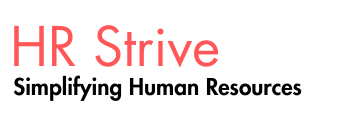The macroenvironment refers to all the factors that exist outside the organization that could influence an organization's strategic decisions. HR leaders are expected to be familiar with and informed on areas that affect the management of an organization's human capital. As a result, one of their responsibilities is to analyze the environment in which the organization and its employees operate. Conducting a PESTLE analysis can help in acquiring information about the factors that might affect strategic decisions and therefore help to improve an organization's competitive market position. A PESTLE analysis looks at the following:
·
Political. Governmental and other
political forces that can exert influence on the economy or a specific industry
and therefore affect the capabilities of an organization, for example, new or
changed taxes, employment laws, and trade tariffs, barriers, and restrictions.
·
Economic. Market and other economic
conditions that can affect an organization, for example, interest and exchange
rates, wages, cost of living, and working hours.
·
. Social. Events and trends in society
that can affect the present and future availability of talent, compliance
requirements, and employee needs, for example, health and safety consciousness,
population demographics, and growth rates.
· Technological. Changes in technological capabilities and availability that can affect an organization's ability to produce and provide goods and services. These factors also include technological literacy levels and research.
·
Legal. Laws and regulations that can
affect an organization's operations. Global organizations have to navigate
different countries' legal systems in addition to those in their home country,
which may require extra care.
·
Environmental. Geographic and climate
changes that might affect an organization's operations, for example, extreme
weather that may disrupt operations or transportation of goods for a specific
area or an entire region.
Understanding how these factors
can affect the core competencies of the organization will help HR in fulfilling
its responsibility to provide the organization with the right number of workers
with the right kinds of skills. It is therefore important for an HR
professional to make time to scan and research external factors that might
affect their organization.
Improving Environmental Awareness
HR professionals can develop
their awareness of their organization and the environment in which it operates
by:
·
Regularly reading the business press, including
more international publications such as The Economist, and following key social
networking sites to monitor the latest business philosophies and trends.
Staying current with the latest academic HR research. Use relationships with
local academics and visit the websites of institutions known for their HR
research publications.
·
Analyzing the organization's performance. Review
the organization's financial reports and strategic goals and understand the
stories they are telling-for example, patterns of performance across a
corporation's divisions or products, trends in indebtedness, and levels of
available cash.
·
Monitoring the performance of other
organizations, including competitors and major employers in your communities of
operation. This can affect employer branding, compensation, engagement, and
diversity strategies.
·
Becoming regular users of third-party
information from government agencies (for example, labor and trade
departments), international bodies like the World Bank and United Nations
agencies, nonprofits, and professional associations, such as the Society for
Human Resource Management.
·
Scanning annual reports from businesses or
groups with comparable markets and workforces. Annual reports can provide
insight into the issues other organizations are wrestling with and the
solutions they have tried.
Information gathering is a skill
that must be used regularly and constantly updated and expanded as new sources
and information channels develop.
HR professionals must also focus
on expanding and deepening their channels of information-inside and outside the
organization. Networking within the organization can provide a sense of
developing management philosophies, preferences, and attitudes. It may be
useful to develop relationships with individuals in the organization's finance function
who can explain the significance of financial performance metrics. Developing
contacts within the stakeholder communities in which the organization operates
can uncover emergent issues. An HR manager can become more aware of educational
challenges facing local school districts, challenges that may affect the future
pool of workers. Networking can also serve to build allies for later actions.
HR Advocacy
HR professionals can keep track
of current events and trends that affect the workplace by belonging to
professional associations such as the Society for Human Resource Management.
Members receive regular and special mailings and can meet peers from other
organizations at chapter meetings.
One of the services professional
associations provide is being an advocate for workplace issues before national
and local governments and regulatory bodies. HR advocacy can focus on issues
that affect the business decisions of major employers and on wage and benefit
issues. HR advocacy can help shape developing policies on issues such as the
impact of recreational marijuana on the workplace or the burden of education
debt on employees.

No comments:
Post a Comment